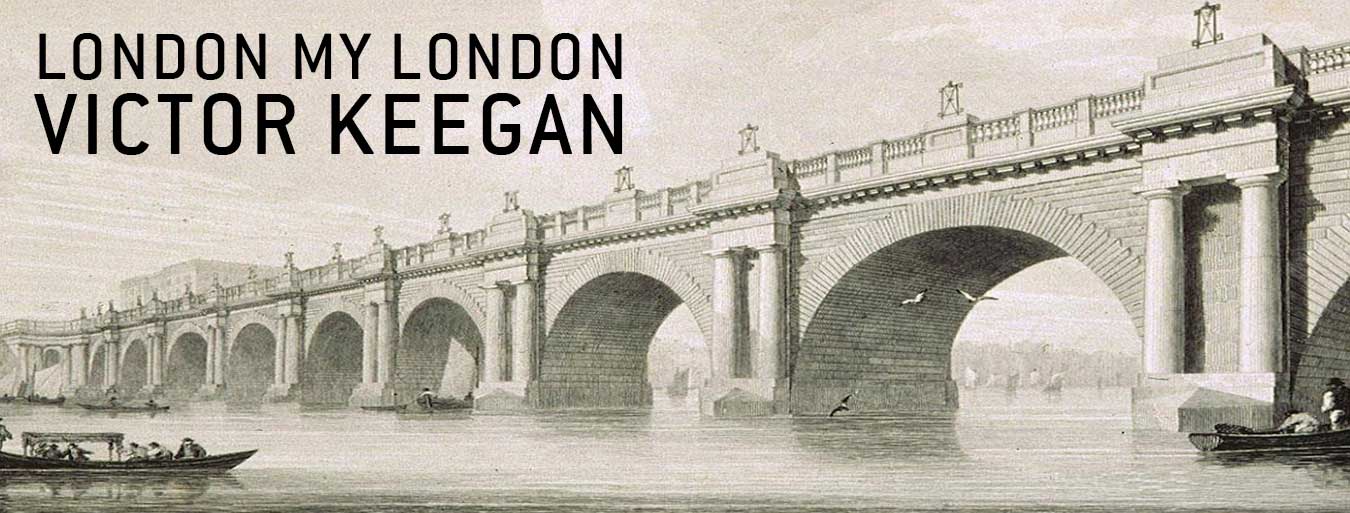Taking The Bard for Granted (reprinted, courtesy of @LondonHistorian)
by Victor Keegan
In Staunton, Virginia there is a loving re-construction of the Blackfriars Theatre which after 1608 was the main theatre used by Shakespeare’s company during the Winter and during Summer evenings when the Globe across the Thames was closed. It has become a focal point for Shakespearean productions in the United States and a vibrant reminder of the respect in which he is held over there.
If, however, you were to look across the road from Blackfriars station in London for evidence of the original site of this historic theatre you would be disappointed. There is nothing there. No reproduction, no explanation, not even a plaque. True, if you looked up you would see the name of the road, “Playhouse Yard” but that doesn’t tell you much. If you walked along Ireland Yard to The Cockpit pub you would be looking at the site of the gatehouse to the former monastery, expropriated by Henry VIII, within which the theatre was built. It is the only house that we have documentary evidence of that Shakespeare owned (the landlord of the nearby Mermaid Tavern was one of the signatories) yet there is no plaque or anything else to indicate its provenance. Contrast all this with Dickens who only had to live in a house for a few months for some sort of memorial to appear. Or Stratford-upon-Avon, where Shakespeare was born but which was not his main workplace: it’s festooned with Bard memorabilia.

The Cockpit pub near Blackfriars, marks the site of the only house we know that Shakespeare owned.
The comparative neglect of Shakespeare by Londoners is curious. We have, of course, the reconstructed Globe Theatre, a marvellous artistic and commercial success. But it is only because of the bloody-minded determination of an American Sam Wanamaker that it is there at all. When the remains of Rose Theatre – constructed in 1587 which featured plays by Shakespeare, Marlowe and Thomas Kyd – were uncovered by archaeologists in 1989, less than 100 yards from the original Globe, it needed a sit-in by actors and other sympathisers to prevent it from falling to the bulldozers; the government wasn’t interested in saving it. Had it been left to “market forces” there would have been no Rose at all. As it turns out the Rose is well on the way to raising enough money to excavate further and build a small theatre on the very stones that over 400 years ago staged Henry VI, Titus Andronicus, Marlowe’s Dr Faustus and the blockbuster success of its day, Thomas Kyd’s The Spanish Tragedy.
The largest theatre in Shakespeare’s time – accommodating 3,000 people (more than any West End theatre today) was situated on Bankside, but it wasn’t the Rose or the Globe. It was The Swan, located about 500 yards west of the Globe between the exit of the new Blackfriars station and Tate Modern. It is now hopelessly lost under a new office block with nothing to record its history. The only clue is that the space in front of it is called Falcon Point, a reference to the tavern which once stood there and which Shakespeare would likely have drunk in. The Swan was situated in Paris Garden, a centre for bear baiting and other pursuits. It was while Shakespeare was living nearby that one William Wayte took out a restraining order against the Bard fearing the playwright might kill him. Not so gentle Shakespeare on this occasion.
The only house that we know for certain Shakespeare lived in (we don’t know for sure that he actually resided in the Blackfriars gatehouse as he probably just rented it out) is also lost for ever. It used to be at the corner of Silver Street and Monkwell Street on London Wall very near to the Museum of London. It is now an underground car park without anything to indicate that the greatest writer in the English language lodged there and, by all accounts, wrote All’s Well That Ends Well reflecting some of the goings-on in the house at the time.
There are, of course a number of public references to Shakespeare though not all of them easily observable by the public. It was only after I had visited Curtain Road in Shoreditch a number of times that I noticed a plaque way above my head stating “William Shakespeare acted at The Theatre”. It took me even longer to discover a similar plaque in a side street further down the road for the Curtain Theatre (the actual remains of which were uncovered last year). There is a stained glass window dedicated to him in St Helen’s Church, Bishopsgate where he lived around 1592 (but left without paying his taxes) and a memorial in Southwark Cathedral, where he is presumed to have worshipped and where his brother is buried. There is a statue in the forecourt of the Guildhall and there used to be a prominent statue of him at the Shakespeare Galley in Pall Mall but it was long ago removed and now stands at the back of Shakespeare’s garden at New Place in Stratford-upon-Avon.

52 Pall Mall: this gallery once housed a collection of paintings about Shakespeare’s plays.
The only bold representation of him in a prominent public place is in Leicester Square which, curiously, doesn’t actually say who he is, at least until the recent reconstruction. Instead there is a simple quotation from Twelfth Night which may sum up some Londoners attitude to him: “There is no darkness but ignorance”.
______________________________
 |
Since retiring from the Guardian a couple of years ago Victor Keegan has channelled his curiosity into unearthing – or recycling – unusual aspects of London which he parks on his website www.LondonMyLondon.co.uk or in iPhone apps he has published including Gems of London, Shakespeare’s London and City Poems. His three poetry books can be found on Kindle with a fourth rumoured to be imminent. |
____
